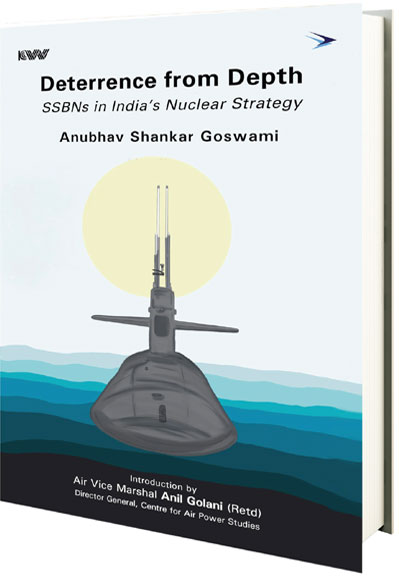Limits of Deterrence April 2025
Why bastion strategy might not be a great idea to emulate for the Indian Navy. An extract
Anubhav Shankar Goswami

Given the limited range of India’s current SLBMs, neither bastion nor open ocean patrol operations are entirely feasible at this point. However, it is only a matter of time before Indian SSBNs patrol with long range missiles. Intermediate and intercontinental SLBMs will put the National Command Authority (NCA) in the sweet dilemma of which deployment strategy to ultimately choose for executing a credible Continuous at-Sea Deterrence (CASD). Vice Admiral Vijay Shankar, the former head of the Strategic Forces Command (SFC), had claimed in a 2014 think-tank event in Washington that India’s sea-based deterrent would eventually “be secured in havens, waters we are pretty sure of, by virtue of the range of the missiles. We will be operating in a pool in our own maritime backyard”. Admiral Arun Prakash is more forthcoming. He claims that it is “likely that India’s SSBNs will operate from sanctuaries or ‘bastions’ in the deep waters of the Bay of Bengal, where they can remain under the protective umbrella of our naval units”. Therefore, one can assume that the Bay of Bengal could become a bastion space for Indian SSBNs.
Draw
Subscribe To Force
Fuel Fearless Journalism with Your Yearly Subscription
SUBSCRIBE NOW
We don’t tell you how to do your job…
But we put the environment in which you do your job in perspective, so that when you step out you do so with the complete picture.







